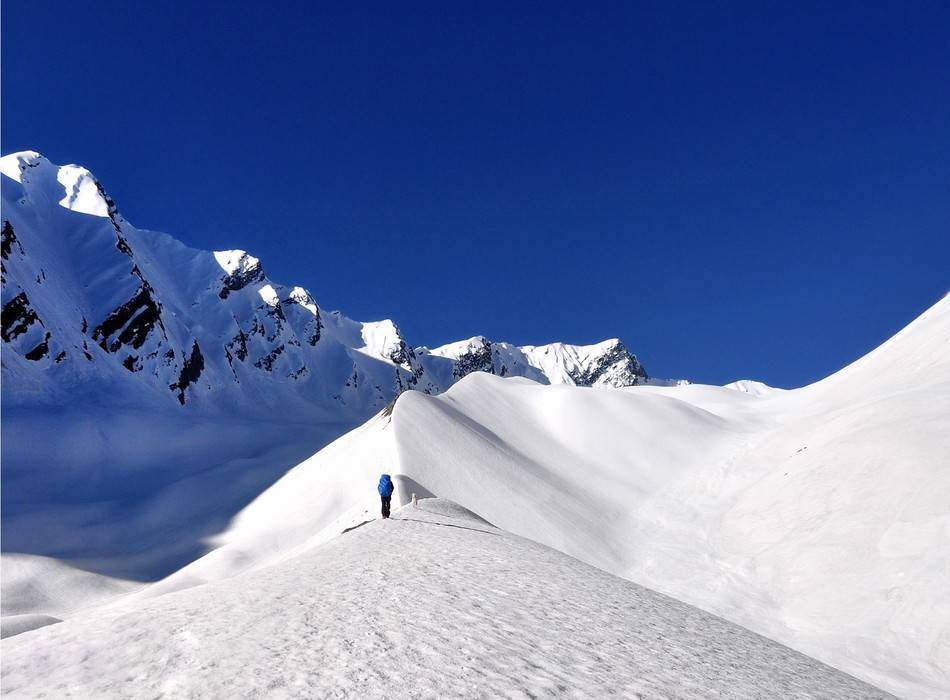

Trekking is a term that can be taken very lightly. But actually, the word trekking has no bound. Any tied road can also be called trek and if you can make your own way on foot. The trek can last for an hour or maybe for an entire day. It all depends on the mental and physical condition of the person who wants to trek.
Trekking is divided into three categories
1. Easy Treks
A simple trek that does not have much elevation or landing. It takes one or two to three days and there is no problem related to the height. Tea house trek also falls in this category. Tea house trek is a trek where there is no problem with food and stay. Generally, there is no need to carry your sleeping bag on such treks. But there is no harm if you carry one with you. Some of the Tea house treks include Deoria Tal, Nag Tibba, Tungnath, Chandrashila, Har ki Doon, Triund, Bijli Mahadev, etc.
2. Moderate Treks
A trek in which height and difficulties in the path of the trek come into play. For example, a trek from Gaumukh to Tapovan. Here you have to walk on the glacier and have to be very careful. Many people also lose their lives every year during such treks. Also, physical strength is also needed in these treks. The walking practice is a must before going on moderate treks. Tea house trek facilities are not frequent in these treks and often you have to carry other things besides your tent and sleeping bag.
Sometimes you need a porter and guide for these facilities. Everest base camp is a great example of this, where there is height as well as where to stay, but its distance and time are so much that it requires practice. There are several treks like Hamta Pass, Tapovan, Panwali Kantha, Dodital, Kedarkantha trek, Roopkund, Hemkud Sahib, Valley of flowers, Ruinsara Tal trek, and more.
3. Difficult trek
A difficult trek is one in which you have to walk for at least 6 to 8 hours a day. A trekker who decides to embark upon a difficult trek should not only be physically strong but also mentally prepared to face the harsh conditions that might arise during these treks. Because these treks generally touch the 5,000 m height mark, the living conditions in these areas are not very hospitable for humans. Apart from your basic sleeping bag, tent and ration you should also have good quality trek essentials such as good shoes, jackets, and ropes, gaiters, etc.
Everyone dreams of walking in the snow, but when it actually comes to it, some people face great difficulties because of the different forms in which the snow presents itself in front of you. In case the snow is frozen hard ice, you have to be careful and not rush because it increases the chance of you slipping and hurting yourself and if the snow is fresh you need to be careful with your steps because your weight might push you inside a ditch that might be covered with the snow.
Even if you are careful walking in freshly fallen snow causes more fatigue in general since you have to pull your feet/leg out of the snow while walking. Kedarkantha Trek is a great example of a winter trek where you need to walk carefully and mind your step.
Some important tips to keep in mind before going on a trek:
1. Walk a few days before you start your trek
How much you need to practice depends on the type of trek you are going on. The old manual way of Treadmill, which runs without a motor, can be a very useful option. Apart from this, cycling is the best option, bicycle for fifteen days in advance and you will be able to walk easily on the trek. Be sure to start off slow and not overdo it and slowly increase the kilometers you walk and reduce it when you arrive near your trek date because you don’t want to be fatigued while you go for the actual trek.
2. For trekking of medium or above category
You should completely give up smoking and alcohol, it will be better. Also, an important thing to keep in mind is that alcohol should not be consumed above 2000 meters as it might cause problems like acute morning sickness, hypothermia, migraine, and dehydration which might hamper your trekking plans.
3. Walking Stick
Walking Stick of a good brand should be always with you. It can be very handy during the treks. Apart from providing support, you can use it to check the depth of the snow, put your weight on it when you stand, and can even be used to ward off animals in case of emergency.
4. Keep your belongings to a minimum
Going trekking means complete freedom from everything including fashion. It will obviously be difficult to walk if you have a lot of weight on you, even if you are planning to hire a porter, remember, he is also a living being and there are no machines to carry your luggage.